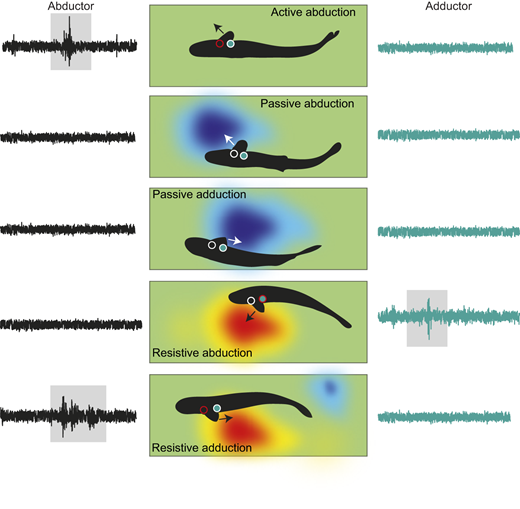 The Whitney Laboratory for Marine Bioscience
The Whitney Laboratory for Marine Bioscience

Congratulations to Brendan Gibbs, Ph.D. Otar Akanyeti, Ph.D. (previous Liao Lab Post Doc), and Dr. James Liao who published a paper titled "Kinematics and muscle activity of pectoral fins in rainbow trout (Oncorhynchus mykiss) station holding in turbulent flow" in the Journal of Experimental Biology.
Pectoral fins play a crucial role in fish locomotion. Despite fishes living in complex fluid environments that exist in rivers and tidal flows, the role of the pectoral fins in navigating turbulent flows is not well understood. This study investigated the kinematics and muscle activity of pectoral fins in rainbow trout as they held station in the unsteady flows behind a D-section cylinder. We observed two distinct pectoral fin behaviors, one during braking and the other during Kármán gaiting. These behaviors were correlated to whole-body movements in response to the hydrodynamic conditions of specific regions in the cylinder wake. Sustained fin extensions during braking, where the fin was held out to maintain its position away from the body and against the flow, were associated with the cessation of forward body velocity, where the fish avoided the suction region directly downstream of the cylinder. Transient fin extensions and retractions during Kármán gaiting controlled body movements in the cross-stream direction. These two fin behaviors had different patterns of muscle activity. All braking events required recruitment from both the abductor and adductor musculature to actively extend a pectoral fin. In contrast, over 50% of fin extension movements during Kármán gaiting proceed in the absence of muscle activity. We reveal that in unsteady fluid environments, pectoral fin movements are the result of a complex combination of passive and active mechanisms that deviate substantially from canonical labriform locomotion, the implications of which await further work on the integration of sensory and motor systems.